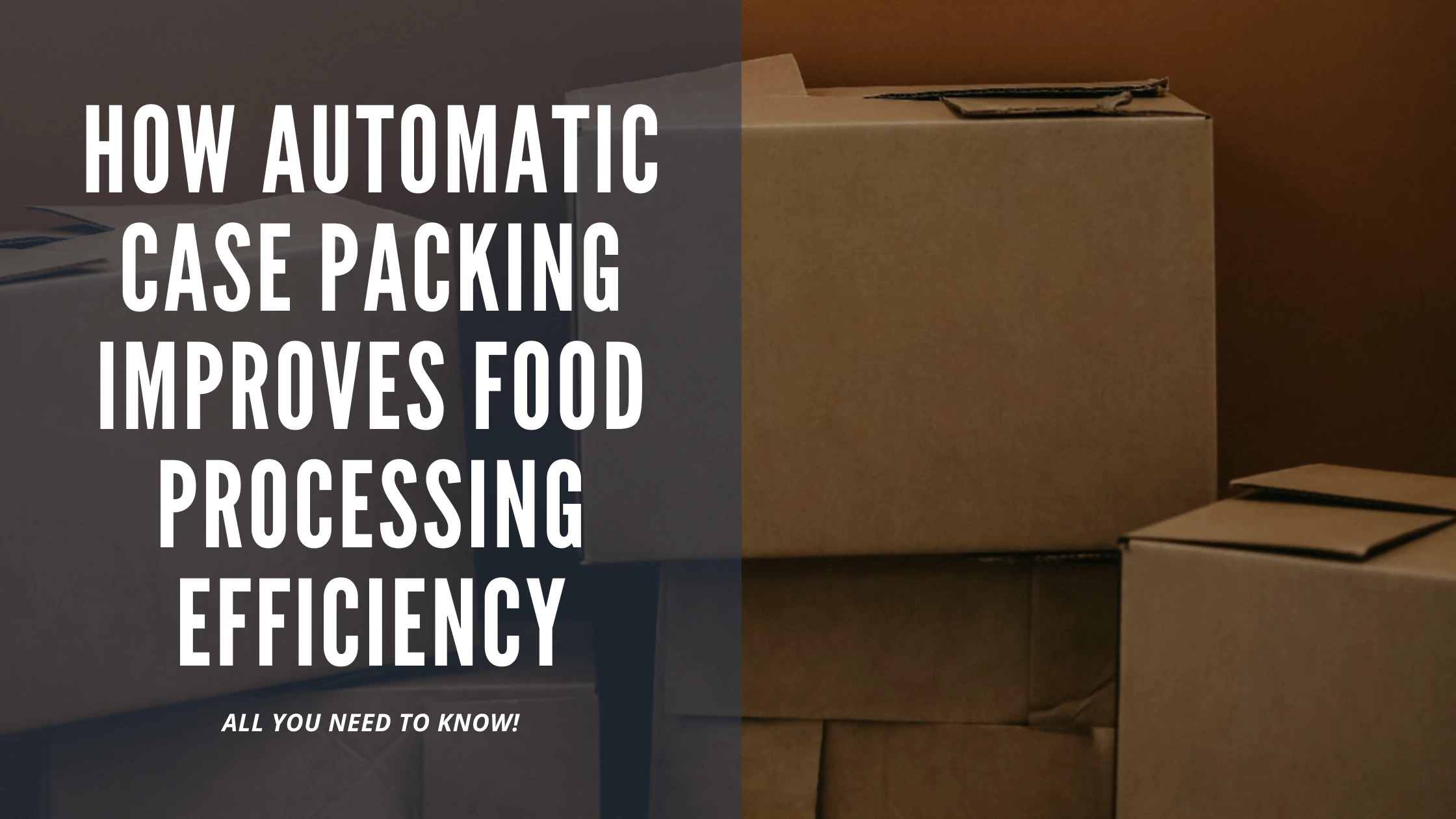How Automatic Case Packing Improves Food Processing Efficiency

Across all industries where manual labor was the primary method of packing end products, new machines, and advanced technologies are now being deployed to improve efficiency. One of the most well-known of these industries is the food and beverage sector, and it's here where we see many of the most innovative food packaging solutions being employed.
Automation in the food packaging process
Over the last few decades, automation has raised the bar considerably for the food production industry. Modern processing facilities are now able to meet much higher demands while simultaneously improving food safety and reducing operational costs.
Here are just a few of the benefits that automation can bring to food and beverage processing businesses:
Safety and protection: Automation and robotics can improve workplace safety and reduce the risk of worker injury, especially in industries where workers would previously have come into direct contact with sharp blades, such as the meat and seafood processing sectors.
Productivity and flexibility: Modern production lines employing advanced robotics and even AI are vastly increasing the productivity of food processing lines worldwide. Thousands of items can be sorted, picked, and packed in the time it would take a human worker to process several dozen pieces. In addition, modern case packing machines can be infinitely calibrated to cope with a range of items and production scenarios.
Consistency and cost saving: Aside from the cost of electricity and servicing, automated case packing machinery can save large amounts of money due to reduced labor requirements. In addition, packaging food products by machine nearly always leads to improved uniformity and consistency.
Increased quality and shelf life: When perishable items are quickly and correctly packed in the right materials, shelf life and freshness are improved, leading to less spoilage and improved profit margins.
Types of automated packing technology
There are several technologies available to improve case packing efficiency, each of which were created for a specific task. The following methods are frequently required during the packaging of food products, though techniques vary greatly depending upon the individual scenario:
Raw food packaging includes uncooked vegetables, fruits, cereals, meats, and seafood.
Boxing and case packing where several smaller items are loaded into cardboard shipping boxes or plastic crates and cases.
PERUZA’s automated packaging solution
Latvian food processing specialists PERUZA have been a leading force in automating food and beverage packaging. One of their machines, the PERUZA case packer, is designed for factories with high-speed production lines. This robotic case packing solution can be designed to individual client specifications as a side-case and top-case packer for various materials, including metal, plastic, and glass. Here are some of the main benefits:
Processing capacity of up to 600 p/min and cycle time up to 2.5 seconds;
Adaptable to customer needs and layouts of 2x4 to 4x5 products;
Works with a wide range of case sizes;
Can be equipped with a slip-sheet dispenser between layers;
Can be equipped with case erecting, case sealing, printing, and labeling functionality.
